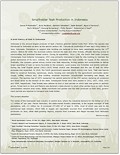| Magazine Article |
 |
|
| Article Title | Smallholder Teak Production in Indonesia | | Author | James M Roshetko, Aulia Perdana, Gerhard Sabastian, Dede Rohadi, Agus Astho Pramono, Nurin Widyani, Nunung Nuryartono, Philip Manalu, Muhammad Anies Fauzi, Purnomo Sumardamto and Nuning Kusumowardhani | | Year | 2016 | | Magazine Title | Teaknet Bulletin | | Place | Kerala, India | | Volume | 9 | | Issue Number | 3 | | Pages | 2-9 | | Call Number | MA0125-16 |
|
| Abstract: |
| Indonesia is the second-largest producer of teak (Tectona grandis) behind India from where the species was introduced to Indonesia as early as the second century AD. Commercial production of teak has a long history in Java, Indonesia. Plantations to support ship building are believed to have been established during the 13th century. Before AD 1600, the Javanese sultans claimed the teak and other forests, officially denying access to communities, but practiced limited control. During its supremacy, 1619–1796, the Dutch East India Company (Vereenigde Oost-Indische Compagnie, VOC) was primarily interested in teak for ship building to maintain the global dominance of its navy. Initially, the company contracted the local nobility for supply of the resource. Gradually, the company gained strong control over teak resources, forcing sultans and communities to deliver larger quantities of teak on terms favorable to the company. Local access was forbidden and strictly enforced. During the brief English period (1811–1815) forest control was liberalised and the use of teak for other purposes was expanded. In 1816, the Dutch government assumed direct control over Java. Teak was heavily felled to construct factories, warehouse, sheds, housing and railroads for the agricultural commodity sector (sugar, coffee, tobacco etc). Ship building remained important. Unauthorized harvesting was illegal, yet common. The agrarian law of 1870 reasserted the central authority of the VOC period, declaring all unclaimed and forest lands as the domain of the state. Subsequent forest laws were passed in 1913, 1927, 1928, 1931 and 1934, respectively. Teak forests were defined as land or land parcels on which teak was grown or partially grown. Forest land on Java and Madura was declared a state domain to which other parties have no right. Some centralization remains even today. While individuals and parties own the teak produced on their land, govern-ment permits are required to transport and trade timber. |
|